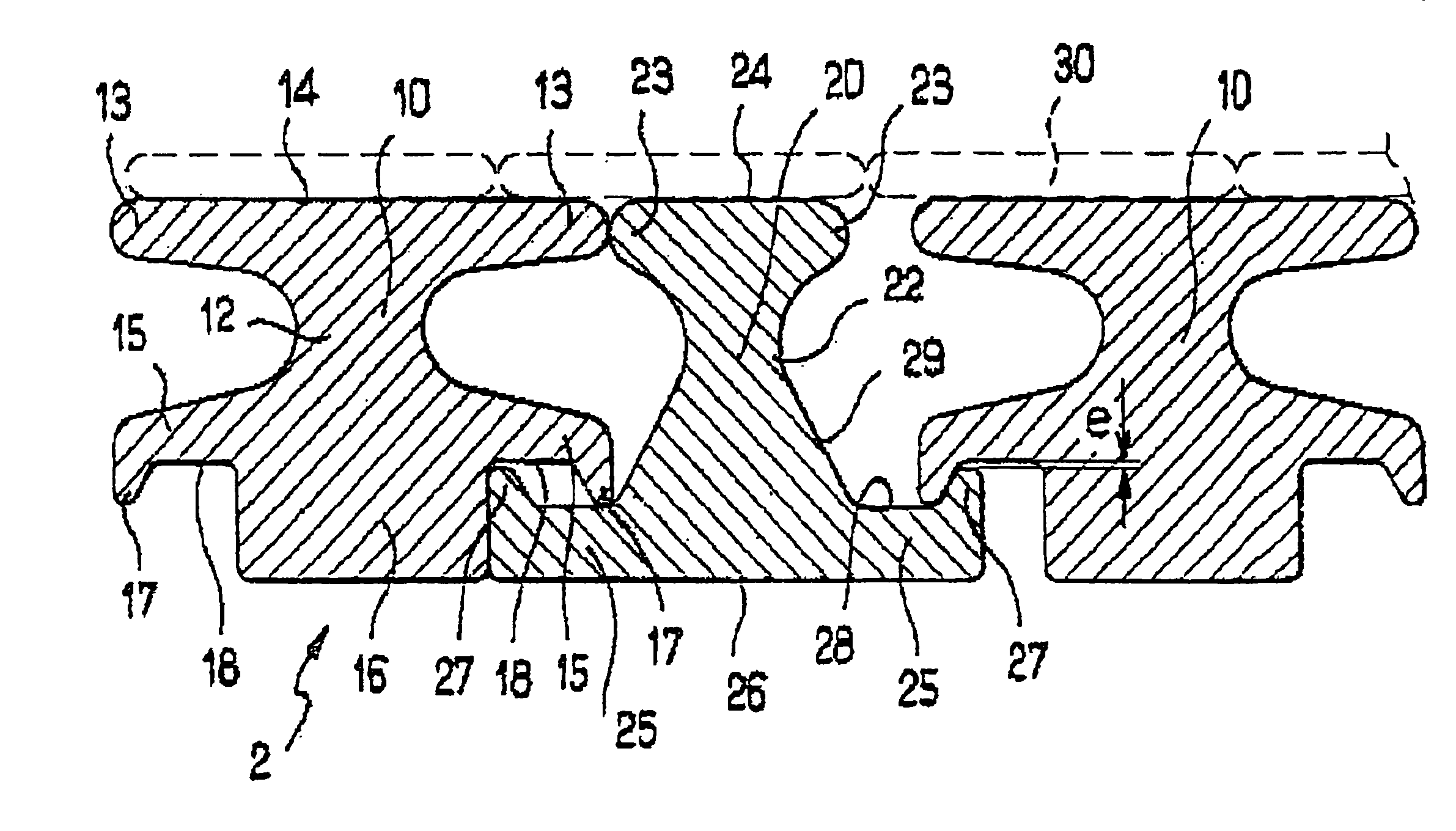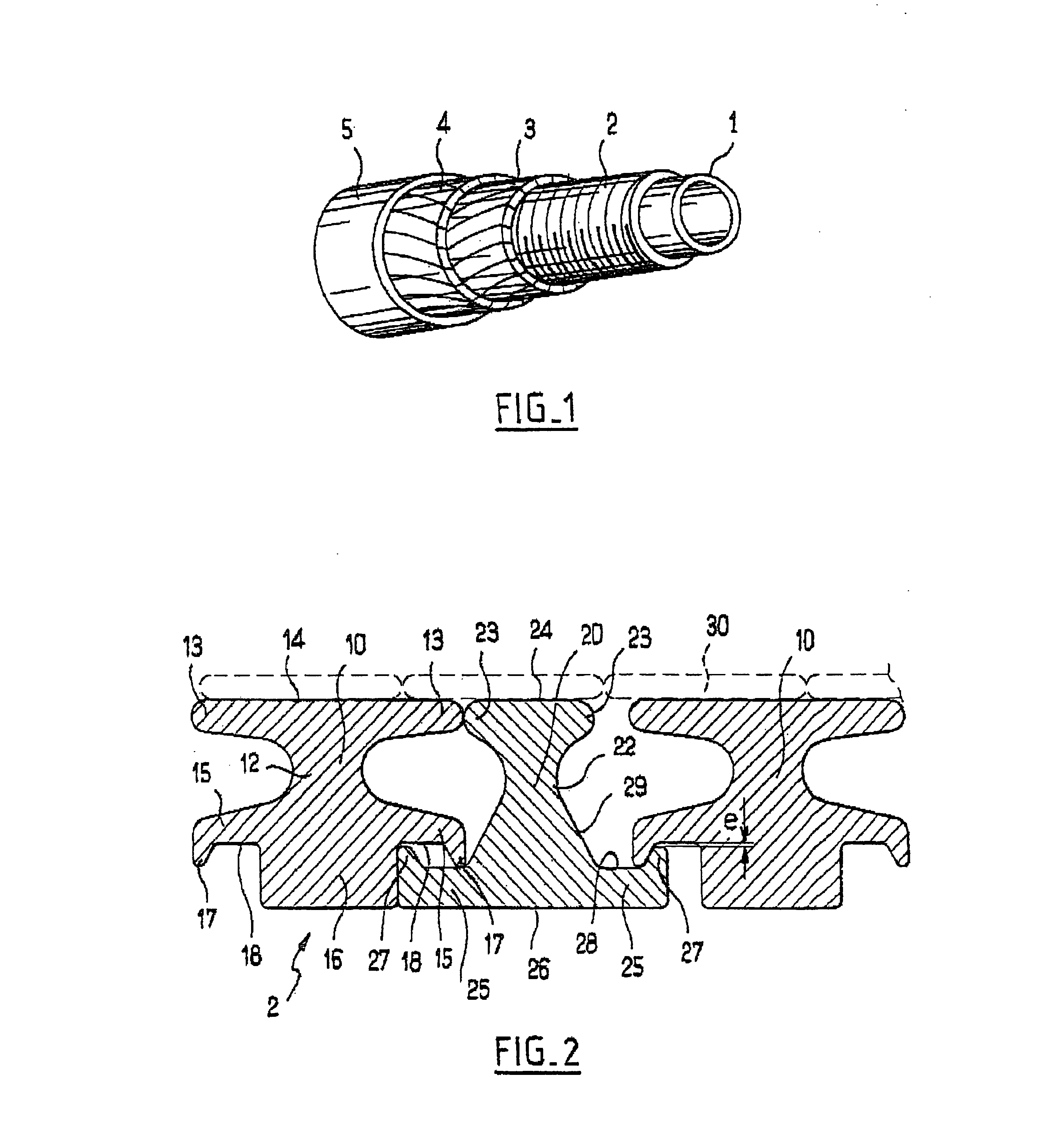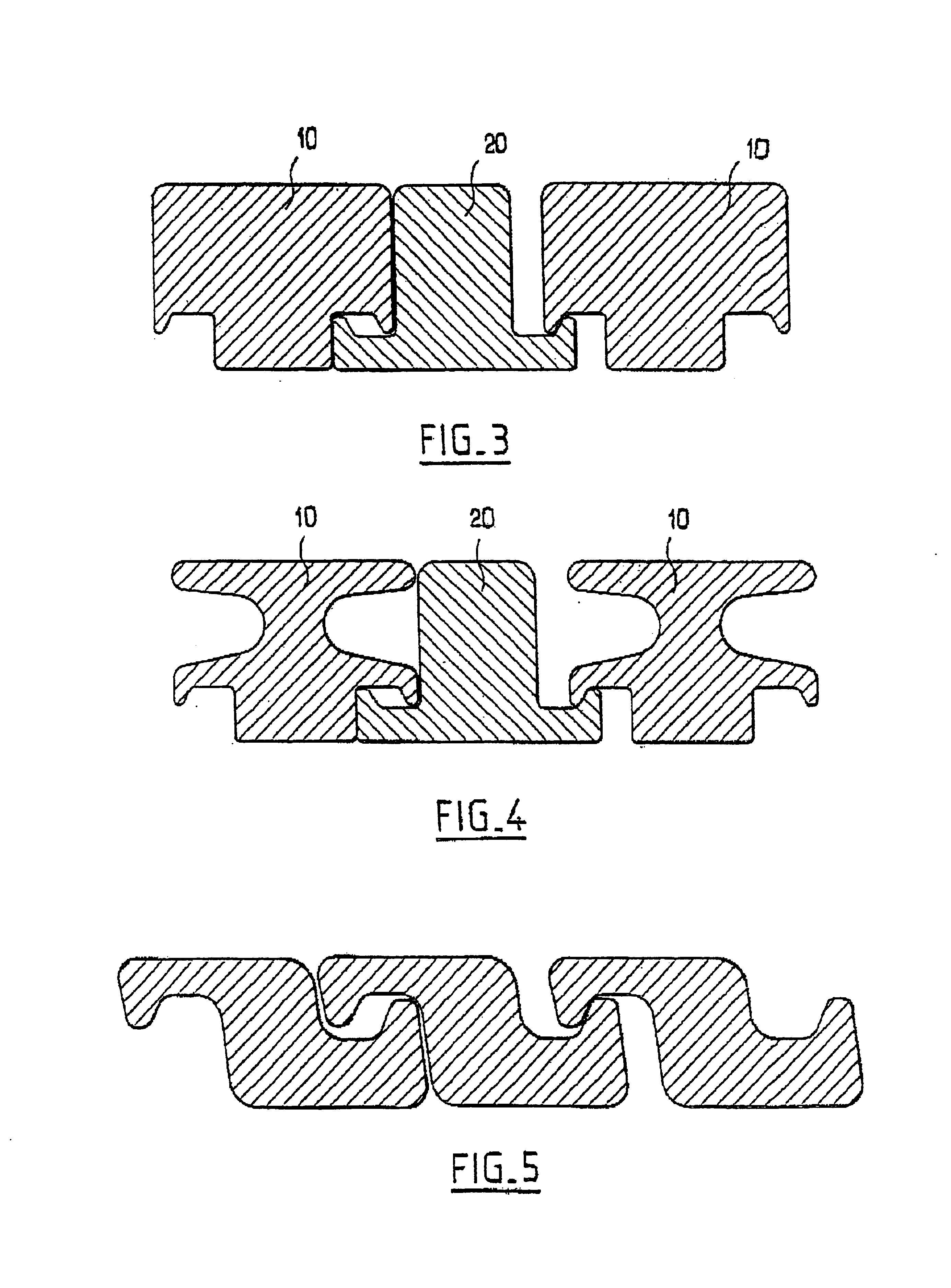Flexible conduit with pressure vault interlocked from below
a technology of pressure vault and flexible conduit, which is applied in the direction of flexible pipes, mechanical devices, pipes, etc., can solve the problems of reducing the life of profile wires, limiting the performance of pressure vaults in dynamic applications, and weak fasteners that cannot withstand dynamic stressing, so as to achieve constant outside diameter and better stress distribution
- Summary
- Abstract
- Description
- Claims
- Application Information
AI Technical Summary
Benefits of technology
Problems solved by technology
Method used
Image
Examples
Embodiment Construction
[0033]As FIG. 1 shows, and in general, a pipe of the smooth-bore type comprises, from the inside outwards, a polymeric internal sealing sheath 1, a metal vault 2 consisting of the winding of at least one interlocked metal profile wire in a helix, an armour layer resistant to the axial tension in the longitudinal direction of the pipe and usually consisting of one or more pairs of crossed plies 3, 4 wound in opposite directions, and a polymeric external sealing sheath 5. Other layers (not shown) may be provided, depending on the type and the application of the pipe, such as, for example, an internal carcass underneath the internal sealing sheath 1 (for rough-bore pipes), a hoop reinforcement layer consisting of a winding with a short pitch of a rectangular wire, interposed between the pressure vault 2 and the first armour ply 3, and intermediate sheaths placed between various armour plies.
[0034]FIGS. 5 to 8 show known pressure vaults from the prior art. FIG. 5 shows an unsymmetrical ...
PUM
 Login to View More
Login to View More Abstract
Description
Claims
Application Information
 Login to View More
Login to View More - R&D
- Intellectual Property
- Life Sciences
- Materials
- Tech Scout
- Unparalleled Data Quality
- Higher Quality Content
- 60% Fewer Hallucinations
Browse by: Latest US Patents, China's latest patents, Technical Efficacy Thesaurus, Application Domain, Technology Topic, Popular Technical Reports.
© 2025 PatSnap. All rights reserved.Legal|Privacy policy|Modern Slavery Act Transparency Statement|Sitemap|About US| Contact US: help@patsnap.com



